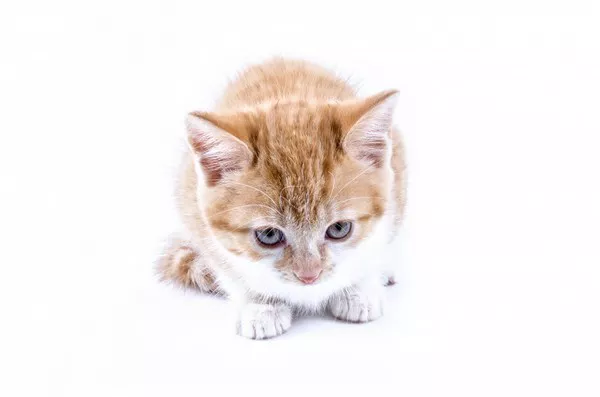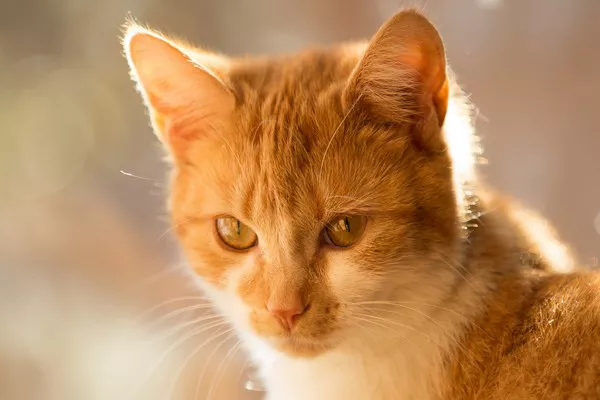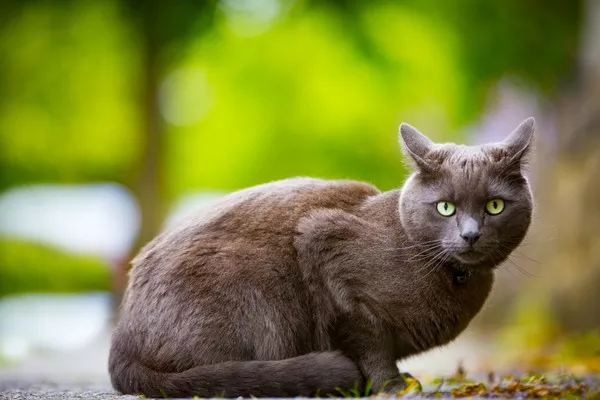When adopting or purchasing a cat, ensuring that it is healthy should be a priority. A healthy cat not only has a better chance of leading a long, happy life, but it will also make your journey as a pet owner more enjoyable. With proper care and attention, you can spot the signs of a healthy cat early on, whether you’re adopting from a shelter, buying from a breeder, or rescuing a stray. This guide will walk you through important steps in evaluating a cat’s health, from physical examinations to behavioral observations, medical history, and the adoption source. By understanding these key factors, you can make an informed decision about the right cat for your home.
1. Physical Examination
A thorough physical examination is the first step in assessing a cat’s overall health. This examination should be conducted before you commit to adopting or purchasing a cat. Here are the main areas to focus on:
Eyes and Ears
The eyes and ears of a healthy cat should be clear and free from any signs of infection or irritation.
Eyes: Check the cat’s eyes for clarity and brightness. They should not be cloudy, red, or watery. A healthy cat’s eyes will be free of discharge, and the corneas should appear shiny and clear. Discharge from the eyes may indicate an infection or other health issue. If the cat’s eyes appear swollen or there is a noticeable change in size, it could also signal a problem.
Ears: Inspect the cat’s ears for cleanliness. Healthy ears are generally free from dirt, wax buildup, or an unusual odor. Smelly ears or excessive scratching can indicate ear mites, yeast infections, or bacterial infections. The ears should be pink and free of any discharge or inflammation. Look for signs of scratching or head shaking, which can also be signs of discomfort or ear problems.
Nose
A healthy cat will have a moist, clean nose with no signs of discharge. Dry or cracked noses can sometimes indicate dehydration, while green or yellow discharge can signal respiratory infections such as feline herpesvirus or calicivirus.
Check the nose for:
Moisture: A dry nose is not necessarily a sign of illness, but it should be checked alongside other symptoms.
Clear nasal passages: If there’s any visible discharge, make sure it’s not excessive or discolored.
Coat and Skin
The cat’s coat can be a major indicator of its health. A healthy cat will have a clean, shiny, and smooth coat. Excessive shedding, bald spots, or a greasy or matted coat can suggest health issues.
Coat quality: The fur should be soft and shiny without excessive shedding or tangling. Cats that groom themselves regularly tend to have smoother, cleaner fur. If the coat is dull, oily, or rough, it could be a sign of poor nutrition, stress, or illness.
Skin condition: Check for signs of parasites such as fleas, ticks, or mites. Healthy skin should be smooth and free from sores, redness, or unusual lumps. If the skin is flaky, scaly, or you notice any bumps or lumps, consult with a veterinarian.
Body Condition
Evaluating the cat’s body condition is essential to ensuring that it is at a healthy weight. Look for the following:
Body shape: The cat should have a slim but muscular build, with a visible waistline and ribs that are easily felt but not protruding. You should not be able to see or feel a prominent spine or protruding bones unless the cat is underweight. On the other hand, a very fat cat may suffer from obesity-related health issues, such as diabetes, joint pain, and heart disease.
Muscle tone: The cat should feel firm and muscular, not flabby or saggy. A cat in good health will have solid muscle structure throughout its body, from the shoulders to the hind legs.
2. Behavior and Temperament
A healthy cat will not only look good physically but will also have a healthy behavior and temperament. Here are the main behavioral signs to check:
Activity Level
Observe how the cat behaves. Healthy cats tend to be active and playful, especially if they are young. They will show curiosity, exploring their environment, playing with toys, and interacting with people.
Playfulness: A cat in good health will often engage in play. Playfulness is a sign that the cat has enough energy and physical stamina.
Resting habits: While cats do sleep a lot, a healthy cat should not be lethargic or listless. If the cat sleeps excessively or appears too tired to move, it could be an indication of illness.
Social Interaction
Behavioral health is as important as physical health. When interacting with a cat, notice how it reacts to you and others.
Interaction with humans: A healthy cat should be social and comfortable being around people, though each cat has its own personality. It should not be overly aggressive or fearful. If a cat is too timid or exhibits signs of aggression, it could signal stress or prior trauma.
Interaction with other animals: If possible, observe the cat’s behavior around other animals. Cats that are well-socialized tend to get along with other cats and pets. A cat that hisses, swats, or hides excessively could be showing signs of stress or anxiety.
3. Medical History and Vaccinations
Understanding a cat’s medical history is essential before adoption. Here are some key factors to consider:
Vaccination Records
Cats need to be vaccinated against common diseases, such as feline distemper, feline herpesvirus, and rabies. Ask to see the cat’s vaccination records to ensure that it is up to date with all necessary shots.
Up-to-date vaccinations: Make sure the cat is current on its vaccinations, especially for kittens. Missing vaccines could make the cat more susceptible to serious infections.
Health Screenings
Ask the breeder, rescue organization, or shelter about any health screenings the cat has undergone. These may include tests for:
Feline leukemia virus (FeLV) and feline immunodeficiency virus (FIV): These viruses can cause long-term health issues for cats. Ensure that the cat has been tested and is negative for both.
Parasite screening: Make sure the cat has been tested for internal parasites, such as worms, and external parasites like fleas.
4. Diet and Nutrition
A healthy diet is fundamental to a cat’s well-being. When evaluating a cat, consider these aspects:
Diet Consistency
Ask the current owner or shelter what kind of food the cat has been eating. A sudden change in diet can cause digestive issues and stress in cats.
Type of food: Ideally, the cat should have been eating a balanced diet, consisting of high-quality cat food (wet or dry, depending on preference). Ask about the brand and type of food, and look for a balanced formulation with appropriate levels of protein, fat, and fiber.
Feeding Schedule
Find out how often the cat is fed and if it follows a regular feeding schedule. Cats tend to thrive on consistency, and an erratic feeding schedule can lead to digestive problems or obesity.
Feeding habits: If the cat is an indoor cat, ensure it is not overfed. Cats that are constantly fed large portions of food without adequate exercise may become obese, which can lead to a variety of health issues.
5. Past Veterinary Care
Reviewing the cat’s past veterinary care is critical in understanding its health history.
Vet Visits
Check whether the cat has had regular veterinary check-ups. A cat that has been regularly checked by a vet is likely to be in better health.
Checkups: Inquire about the frequency of the cat’s visits to the vet, particularly for wellness exams and vaccinations.
Spaying/Neutering
If the cat has not been spayed or neutered, discuss this with the current owner or shelter. Spaying or neutering not only helps control the pet population but also reduces the risk of certain health problems.
6. Adoption Source
The source from which you adopt or purchase a cat plays a critical role in ensuring its overall health.
Reputable Source
Adopt or buy from a reputable breeder, rescue organization, or shelter. A reputable source will provide accurate health history, vaccination records, and any known medical issues.
Shelter or rescue organization: Make sure the organization is transparent about the cat’s history and health.
Breeder: If purchasing from a breeder, ensure they follow ethical breeding practices and prioritize the health and welfare of their animals.
Facility Cleanliness
Whether you adopt from a shelter, rescue group, or breeder, the cleanliness and overall conditions of the facility should be a priority. A well-maintained, clean environment is crucial for the health and well-being of the animals.
Conclusion
Choosing a healthy cat requires thorough observation and careful consideration. By assessing the cat’s physical condition, behavior, medical history, dietary habits, and the adoption source, you can ensure that you are welcoming a happy and healthy companion into your home. Remember that a healthy cat not only improves your experience as a pet owner but also contributes to a long and fulfilling life together.
Related Topics



























